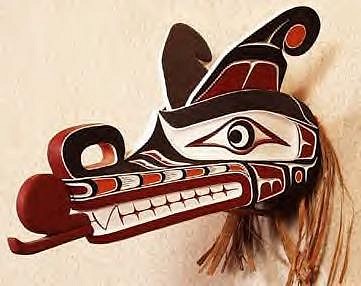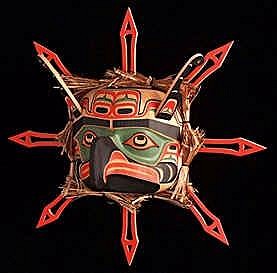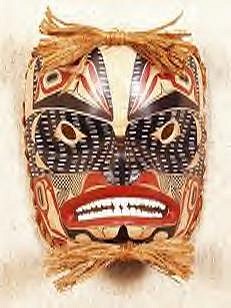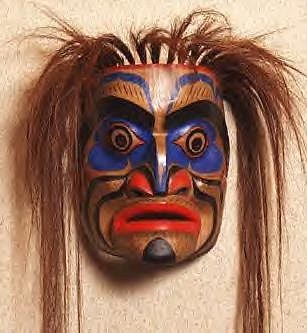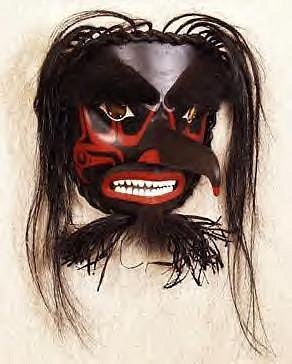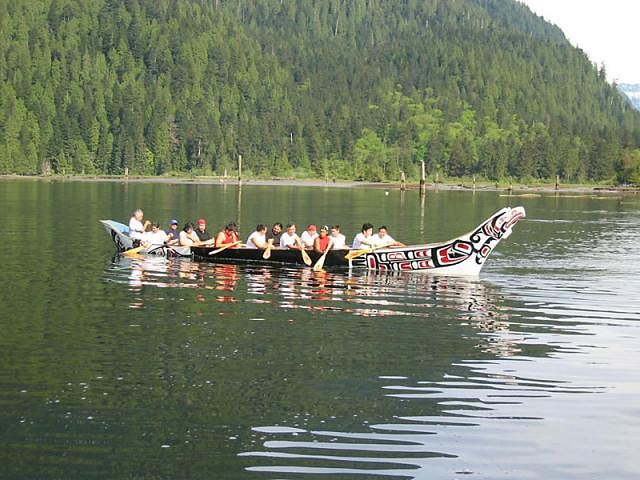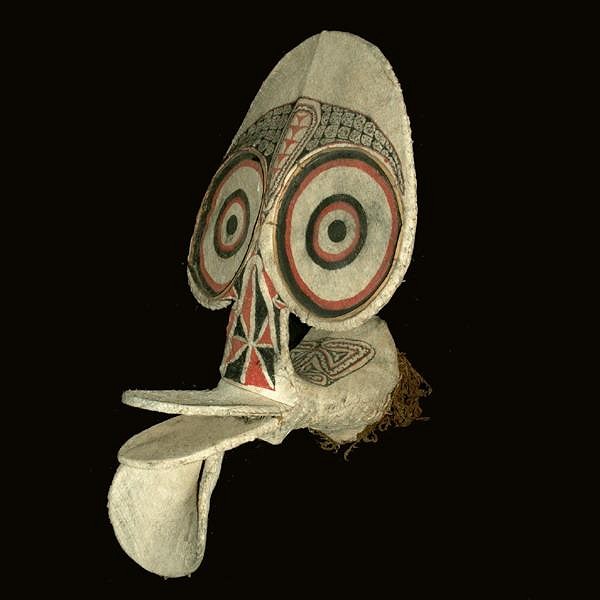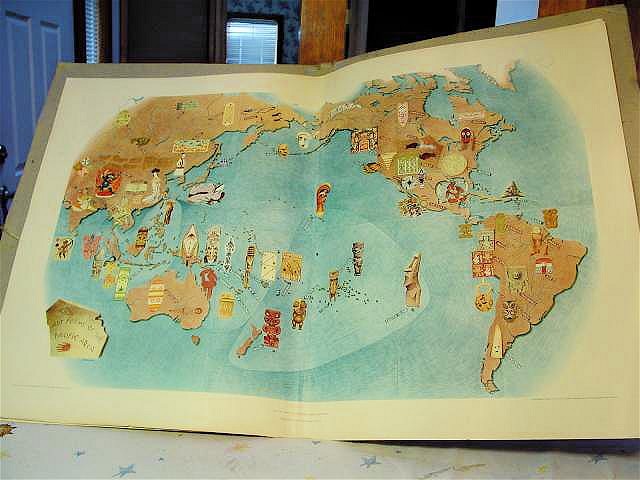Tiki Central / General Tiki
Hello From Joe90!
Pages: 1 17 replies
|
J
joe90
Posted
posted
on
Tue, Aug 12, 2008 1:35 PM
Hi everybody! I was searching for information on "Lt. Robin Crusoe, USN" on the Internet and found Tiki Central. Well, considering that I have some ultra-kuhl Tiki patio lanterns at my cottage in The Birthplace of the SeaMonkeys (really!) I had to join up. My cottage is situated on a salt lake, and salt lakes contain a species of brine shrimp that we know as SeaMonkeys. Throughout the World, salt lakes have always held spiritual significance to people, from The Dead Sea to The Great Salt Lake. "My" lake is called "Little Manitou". Manitou means spirit, or god. No, it's not a tropical paradise -- especially in the Winter! But I like it a lot -- especially when my Tiki patio lanterns are turned on! |
|
J
joe90
Posted
posted
on
Tue, Aug 12, 2008 10:49 PM
I've been going through the posts, looking for references to Pacific Rim cultures. As a student of World Religions and Spirituality, I realize that many Anthropologists have put forth the notion of the connections amongst the peoples of the Pacific Rim. I've seen the similarity in the spirituality and also in the symbolism surrounding that spirituality. Here are some masks from the West Coast of Canada... A Sisiutl headdress of the Kwakwaka’wakw people... These are powerful shape shifters... Kwakwaka'wakw Thunderbird Mask (Thunderbirds are also important to the Sun Dance, a Plains ritual that originated in the southern US.) Tsimshian Bear Mask Nuu-chah-nulth portrait mask Tsimshian mosquito mask But the outstanding similarities (for me, at least) are the War Canoes... Has anyone else noted these cultural and symbolic similarities? |
|
P
procinema29
Posted
posted
on
Wed, Aug 13, 2008 6:54 AM
Welcome! Seems like you like Gerry Anderson's stuff, too! We were talking about the swanky aspects of "Thunderbirds" on some thread a while back... |
|
M
MadDogMike
Posted
posted
on
Wed, Aug 13, 2008 9:30 AM
Welcome to TC Joe90. I think you may be on to something! The Sisiutl mask looks a lot like the Baining mask that Fugu posted And the war canoe looks like some of Heather Watts' paintings Do you think the Polynesians migrated to Canada or that the Kwakwaka’wakws migrated to Polynesia? :D PS those are some wicked looking Kwakwaka’wakw warriors in your canoe! |
|
B
bigbrotiki
Posted
posted
on
Wed, Aug 13, 2008 10:04 AM
....if you squint reeeeal hard, that is. :) Here is a nice map that shows the different art forms of the Pacific area:
This website concerns itself more with the Polynesian and general South Seas native art forms as re-imagined in the mid-century on mainland America, but comparative examples are always interesting. |
|
J
joe90
Posted
posted
on
Thu, Aug 14, 2008 3:40 PM
Thanks for the Welcome, MadDogMike! Well... If you ask me, I'd say that the Polynesians and the West Coast Peoples of this Turtle Island probably gained their cultural sensibilities from an older, more powerful group. Culture is a fluid thing, and is always changing. Like water, if it can't flow, it becomes stagnant. We're beginning to realize that Heyerdahl was right, but I think he only showed us the tip of the iceberg. When Captain Cook arrived on Vancouver Island -- first contact with the West Coast Indians for the Euro's -- he was given a Salish ceremonial shirt that had ancient Chinese coins woven into it. They've discovered a type of Maize in northern Pakistan that is genetically derived from Mexican Maize. They figure it's about 4,000 years since it was last in Mexico. I'll bet that in the next few years they'll be finding ancient genetic links between Polynesia and North America. But really, if Polynesians migrated here from Hawaii, I'd sure like to have whatever the H. E. Double Hockey Sticks they were smoking, because B.C. sure ain't Hawaii! |
|
T
TikiPearlsOfTahiti
Posted
posted
on
Fri, Aug 15, 2008 6:20 PM
Hi and welcome! I love that west coast art. My husband is from BC, and I've been there many times. There's a great museum we went to somewhere that had a lot of that Haida art (Oops, sorry if that isn't spelled right!). I bought one or two small things, including a gorgeous silver pendant made in the image of a stylized raven with its wings spread, quite lovely. I see quite a lot of similarity between the various native cultures, must all have had some overlap somewhere. |
|
RH
Robb Hamel
Posted
posted
on
Sun, Aug 17, 2008 9:01 AM
Wikipedia's entry on Polynesia mentions a genetic connection between them and the Tlingit of Alaska, and some cultural similarities with the coastal native people of Canada. The article is very cool, check it out. Welcome Joe 90, and thanks for this thread, it's a great topic and the pics are very nice. Does anyone know of a thorough catalog of the varieties of Tiki, real or imagined? The books on South Seas art seem to have everything but. |
|
RH
Robb Hamel
Posted
posted
on
Sun, Aug 17, 2008 9:13 AM
Oh yeah: the Wikipedia article says that Proto-Polynesians from Asia may have traveled to Alaska and Northern Canada first, then entered the Polynesian triangle via Hawaii. Cool stuff. |
|
AT

Alii Tiki
Posted
posted
on
Sun, Aug 17, 2008 3:31 PM
Being sea-faring people is it possible that these cultures would have been inclined to travel further than we imagine by following the migration of whales? |
|
RH
Robb Hamel
Posted
posted
on
Mon, Aug 18, 2008 6:42 PM
Alii Tiki - that's one I've never heard or even imagined. Is it possible that they followed whales? |
|
J
joe90
Posted
posted
on
Mon, Aug 18, 2008 9:37 PM
Definitely! The hunting of whales is a shared by most Pacific Rim Cultures. The hunters were aware of migration patterns, and over the course of several centuries I'm sure that these groups ranged further and further abroad. The migration patterns of the people probably followed the coastal lines of the Pacific Rim countries. When you start to look at cultures such as the Tinglit of British Columbia, the Ainu of Japan, the Seram in the Malaku Islands, the Maori, the Samoans and Polynesians you begin to see cultural parallels, if not ethnic/genetic parallels. And all of these peoples have their Tikis, or their Totems. They are drawn to the spiritual power, like moths to the light. (I mean that in the sense of navigation as opposed to self-destruction) :) And here we are, children of the Digital Age, a wealth of information at our fingertips, and we still are drawn to the Tiki, and feel the need to pay respects to the tradition. That's the wonder of the human spirit! |
|
AT

Alii Tiki
Posted
posted
on
Wed, Aug 20, 2008 11:17 PM
Amen & Aloha Joe |
|
T
Tikiwahine
Posted
posted
on
Wed, Aug 20, 2008 11:47 PM
I recently talked to a relative of one of the settlers that came from Hawaii, they lived on Russell Island. It's just off Vancouver Island. I mentioned to him the theory of other Polynesians coming to BC even earlier, but he wasn't too sure about anything earlier than the mid 1800s. Here is a little bit of history: During the fur trade, the Hudson’s Bay Company hired several hundred Hawaiians (Kanakas) as labourers. After their contracts expired, some Hawaiians decided not to return to their homeland. Many settled on southern Saltspring, Portland, Coal and Russell Islands. Russell Island features one of the last known Hawaiian homesteads. Maria Mahoi, born on Vancouver Island in the mid 1800s to a First Nations mother and Hawaiian father, inherited Russell Island from its first settler, William Haumea (a Hawaiian friend, and possibly her father). Maria and her second husband, George Fisher, brought their family to the island in 1902, and Maria lived on the island until her death in 1936. Clues to a much longer human presence are scattered across Russell Island, including shoreline shell middens left by millennia of use by area First Nations. Near the trail on the western end of the island, rectangular scars on Douglas fir trees indicate where they may have removed bark for fire starter or other necessities. |
|
T
Tikiwahine
Posted
posted
on
Wed, Aug 20, 2008 11:54 PM
Here's a really interesting article about Salt Spring Island's Hawaiian Community |
|
J
joe90
Posted
posted
on
Thu, Aug 21, 2008 9:30 AM
Wow! This was something I was totally unaware of! I wonder what those first generation Kanaka-Kanadians perceptions were of the First Nations. They intermarried with them, so there must've been a high degree of comfort/familiarity with the Native Culture. |
|
RH
Robb Hamel
Posted
posted
on
Thu, Aug 21, 2008 6:39 PM
The Wikipedia comment about the pre-Polys going to Alaska before Hawaii is pretty cool. |
|
J
joe90
Posted
posted
on
Sat, Aug 23, 2008 9:31 PM
I just checked it out, having never seen it before. It makes sense that they would go from Taiwan, across the Bering Sea, down the coast of North America and then to Hawaii. Now... How does the Caucasoidal Kennewick Man fit in here??? http://en.wikipedia.org/wiki/Kennewick_Man I know that Australian Aboriginal People are Caucasoid; they ancestral origins are from India. There has been speculation that this group of "pre-caucasians" migrated up along the Asian side of the Pacific Rim and settled as far north as Japan. The Ainu, although proven not to be of European origin, share some caucasoid traits. Maybe they too crossed over the Bering Sea. |
Pages: 1 17 replies

